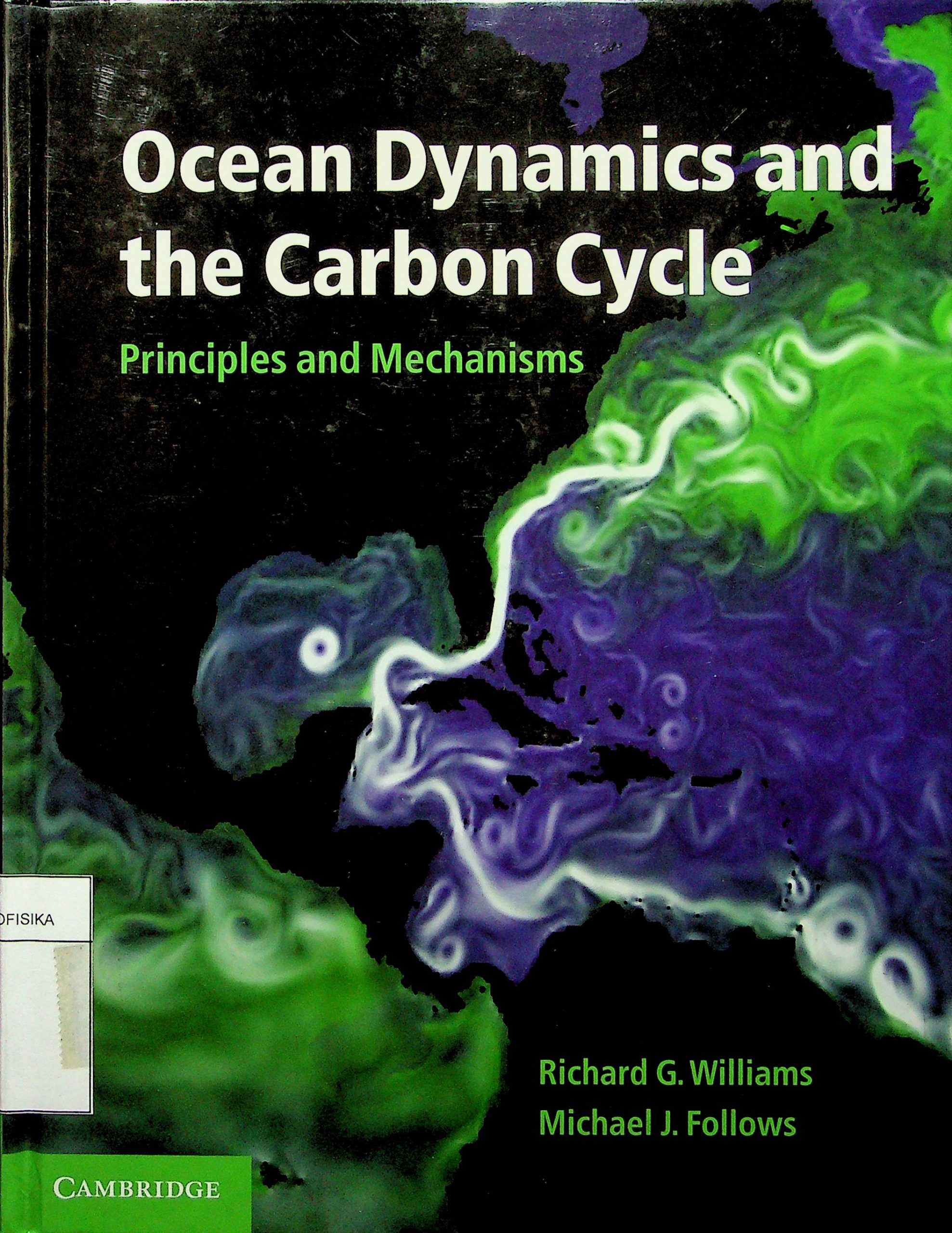• How is the ocean carbon cycle controlled and how is carbon dioxide exchanged between the atmosphere and ocean? Our approach is to focus on the fundamental processes and mechanisms using observational data whenever possible to motivate our discussion. To make the material accessible, we have selected the appropriate theory that we feel is most relevant for interpreting the observational signals, rather than provide a more comprehensive theoretical review. The book is divided into four parts. Part I provides an overall introduction: Chapter 1 starts with a broad-ranging context as to why the ocean is important for the planet, and Chapter 2 a descriptive and preliminary view of the themes addressed in more detail in the book - how the ocean circulates, where phytoplankton grow in the ocean and how carbon is cycled on the planet. Part II applies basic undergraduate physics, chemistry and biology to address the underlying fundamental principles at work in the ocean: the transport concepts of advection, diffusion and eddy transfer; the physical concepts of large-scale flow and atmospheric forcing; the basic biological principles of cell growth and production of organic matter; and the chemical concepts of mass balance, energetics and charge balance regulating the carbon cycle. Part III addresses a range of physical phenomena and their effects on the biogeochemistry and cycling of carbon, including the following themes: how seasonality varies; why there are gyres and boundary currents; how ocean eddies form and their large-scale effect; how surface waters are transferred to the ocean interior; how the interplay of physical and biological processes affect the carbon cycle; and how the deep ocean overturns. Part IV provides two integrated frameworks to understand, firstly, how carbon is cycled and partitioned between the atmosphere and ocean, and secondly, how water masses are formed over the globe. Finally, we provide concluding remarks about the way forward. Colour plates are used to provide a mini atlas, conveying how physical and biogeochemical properties vary throughout the ocean, complementing the black and white figures used throughout the book. The book is designed for two different audiences: Honours or graduate students wishing to gain an understanding of how the ocean behaves, with a firm emphasis on observational signals, as well as researchers in a particular discipline who wish to acquire a broader, more interdisciplinary view of the ocean. Students are recommended to read through Part I to gain a preliminary view, then work through the Fundamental chapters in Part II, before embarking on the more advanced material in Part III. More experienced researchers are recommended to work through the Fundamental chapters outside their own expertise in Part II, then examine the more detailed description of physical phenomena and their impacts on the carbon cycle in Part III, and the integrated frameworks in Part IV.Understanding these topics can often be challenging at times and the language and level of mathematics off-putting. Consequently, we have designed this book to be as accessible as possible for an interdisciplinary audience. The scientific questions are discussed through a combination of data-based diagnostics, schematic illustrations and, in some cases, theoretical balances requiring an understanding of calculus, where a more quantitativeunderstanding can be gained by working through the equations governing rates of changeor identifying equilibrium states. More formal material is included in boxes and the appendix detailing derivations and mathematical tools, as well as in targeted questions to work through at the end of the chapters. Hopefully, readers can find the appropriate level to suit themselves. Finally, we have presented our own perspective in addressing these questions and, in some cases, there is no clear consensus and readers need to be aware that many of the research topics are ongoing and merit further investigation.
5
Ocean Dynamics and the Carbon Cycle
Richard G. Williams & Michael J. Follows
Penerbit :
Cambridge University
Tahun :
2011
Buku Text
Ocean
-
No Scan18
-
No Klasifikasi551.46'6
-
ISBN-
-
ISSN-
-
No Registrasi006B022015
-
Lokasi Terbit-
-
Jumlah Hal32
-
Label551.46'6 Ric o
-
Versi DigitalYA
-
Versi FisikYA
-
Lokasi Rak Buku Fisik01/A/04
-
Jumlah Exemplar Fisik Tersedia1






